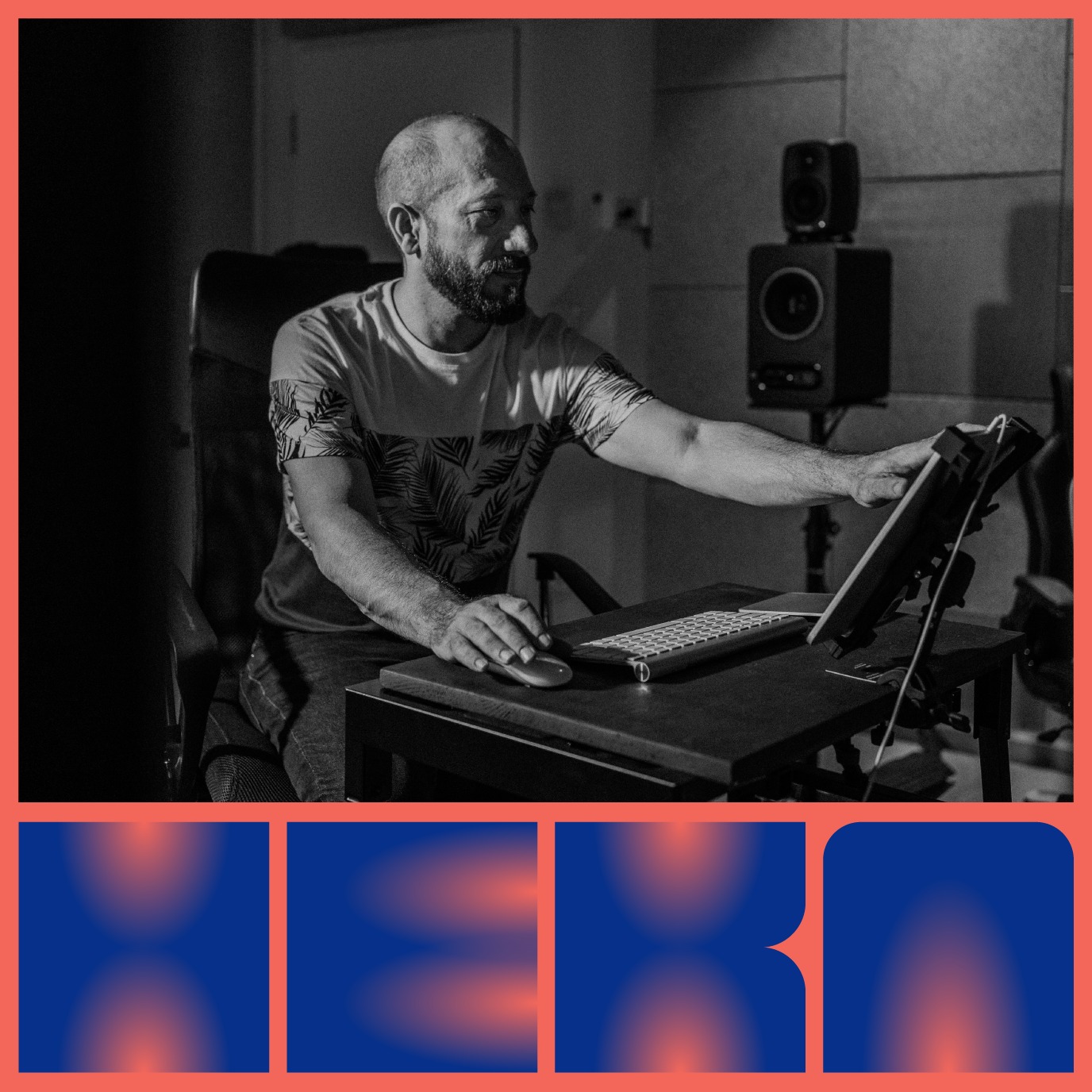Notifications
TAKE A LOOK AT KUBER – OUR EXPERIENTIAL SPATIAL AUDIO UNIT

KUBER is an experiential sound facility exploring the potential of digital spatial audio for artistic expression and research. Located at the HEKA Art & Science Lab in Koper, Slovenia, KUBER is an open space where innovative ideas about spatial audio can come to life.
Our Approach: Production, Reproduction, Research, and Education
KUBER serves as a one-person-centered production space, immersive listening room, and recording studio. We collaborate with artists and musicians to develop content and customized tools for various artistic contexts. Our work revolves around four lines of action:
Production
We produce our own spatial audio content.
We invite residents, whether experienced or not, to explore the studio and create their own works.
We have produced various audio works, ranging from composers/sound artists and researchers, on the first phase of the Kuber we functioned as transducers between the ideas and the existent tools, co-produced three, and released one master track on Apple Music by Slovenian artist Olenc.
1 custom-made software based on the Swede composer Åke Parmerud, who donated the source code of his tool Hyper-Space in order to be the basis of our workflow for others to use and transform into a flexible approach to their outputs.
Reproduction
KUBER has been used as a listening venue, it functions as an instrument of speakers that can be individually experienced for different purposes, for example:
Experimental music
Field recordings
Soundscape
Meditation
Hyper Storytelling
Sonic Theater
Education
We regularly host workshops conducted by experts in our lab, showcasing tools and techniques related to spatial audio.
We record video conversations and dialogues around the applications of immersive audio, and are planning a series of interviews and discussions to strengthen our inter-institutional connections.
Research
We test existing tools, platforms, and publications to identify strengths and weaknesses.
Based on our findings, we prototype modular software and hardware solutions for specific and general uses.
For each piece produced, we develop a unique workflow tailored to visitors’ spatial ideas, transforming them into practical tools for others to use.
Spatial Audio and Immersive Listening
Spatial Audio refers to the ability to express and perceive sound in a three-dimensional space, creating an immersive and realistic listening experience. It involves techniques like binaural recording, ambisonics, and object-based audio. At KUBER, we believe spatial audio formats can transcend boundaries, driving multiple innovations across disciplines.
A Focus on the Listener’s Experience
KUBER’s design goes beyond listening alone; it encompasses the entire sensory experience. By utilizing our ears and torso as sensors, we incorporate attached transducers and directional sound technology that focuses on the listener’s position in the middle of the speakers. This setup allows for enhanced perception of sound positions.
Expanding the Conversation around Sound
In his 1930 essays on sound and culture, Igor Stravinsky discussed the potential for creating music specifically for phonographs to preserve the true essence of sound. At KUBER, we embrace this idea by expanding the conversation on how we relate to sound. While other forms of entertainment and culture have evolved with advancements like 4K displays and gaming experiences, music consumption has mostly occurred through handheld devices. Spatial Audio, also known as “3D sound,” is elevating the importance of sound as a driver for human experiences. In our lab, we use experimentation as a catalyst for artistic, technological, social, and experiential innovation.
The Role of Immersive Audio Technologies and Cybernetics
At KUBER, we draw inspiration from Norbert Wiener’s theory of cybernetics, which explores communication and control systems. We apply cybernetics principles to spatial sound reproduction, creating intricate feedback loops between the three sound systems and the listener. By utilizing 3-axis controllers and collecting data on spatial gestures, we can adjust and adapt the sound in real-time, providing a more intuitive and natural way of interacting with the audio environment.
Removing Visual Elements for Experiential Sound Art
At KUBER, we remove all visual elements to produce experiential sound art. By isolating the essence of sound and eliminating any extraneous elements that may distract from or alter the intended listening experience, we enable the listener to focus solely on the sound itself. This removes influences such as the artist’s image or reputation, historical context, or preconceived notions, allowing for a pure and unadulterated sonic experience.
Challenges and Future Plans
As we prioritize the intersection of human-centered technologies and art, we face several challenges and strive to push the boundaries of spatial audio. We aim to develop interactive, gesture-based mixing systems that utilize AI and machine learning techniques to analyze and generate music in real-time. Our ongoing exploration involves creating tools and interfaces that allow users to manipulate and interact with the sound environment in innovative ways. We envision taking these technologies beyond our studio and concert halls to various settings where sound matters, including black box theaters, hypermedia storytelling, public buildings, wellness centers, hospitals, and more.
We also recognize the importance of distributing spatial audio content beyond KUBER. To achieve this, we produce headphone versions (binaural) of the sound pieces using head-related transfer functions (HRTFs), which simulate realistic audio experiences. Furthermore, we actively engage with streaming platforms such as Apple Music, Spotify, Tidal, and Deezer to advocate for the inclusion of immersive sound formats, offering listeners a diverse range of alternatives.
In addition to our artistic endeavors, we conduct research on techniques of convolution reverb and hybrid recording systems. Our aim is to explore new approaches that capture and recreate acoustic spaces more accurately, providing a heightened sense of realism. These advancements will find applications in various contexts, including indoor and outdoor installations, airports, public office buildings, wellness centers, hospitals, and more.
>> TAKE A LOOK AT OUR PRESENTATIONAL VIDEO
GET IN CONTACT WITH US:
mauricio.valdes@pina.si
heka@pina.si
heka.si

